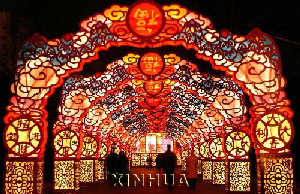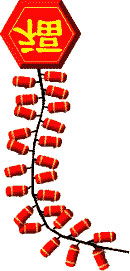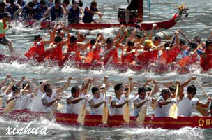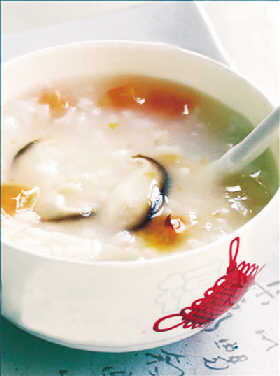top: 1
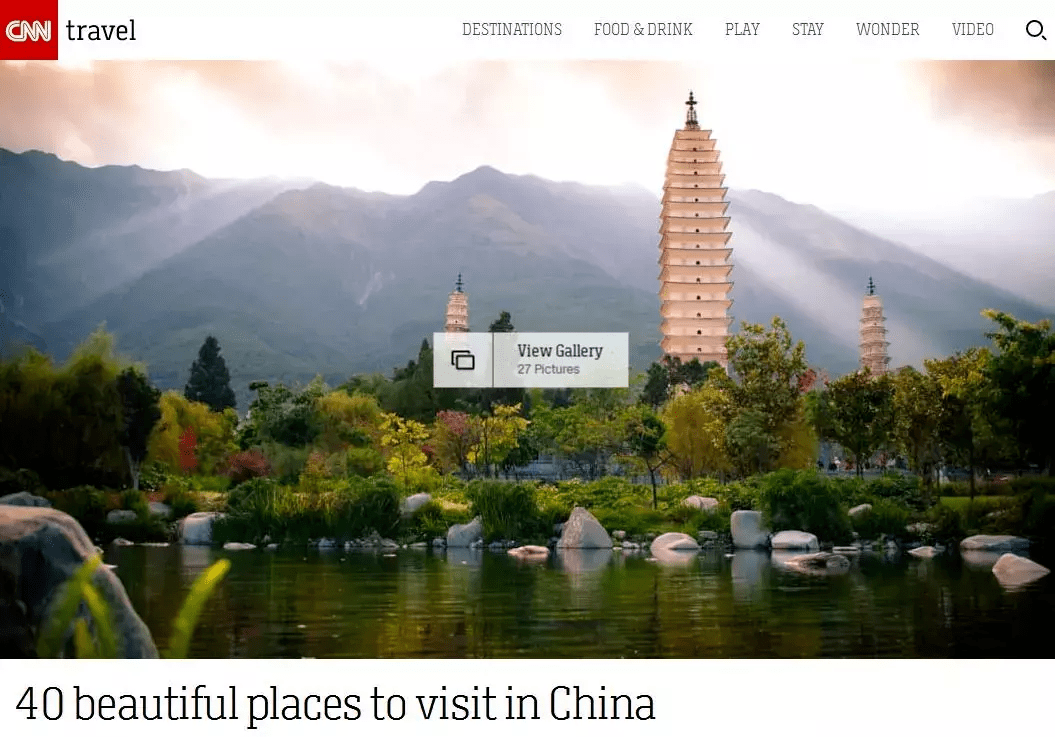
1. Anhui: Hongcun Ancient Village (安徽宏村)

安徽宏村已经有900年历史,凭借其宁静的氛围和别样的建筑一直吸引着游客的注意。宏村的建筑结构十分经典,月亮湖以及独特的风土人情几十年来都是艺术生的灵感源泉。走在石灰岩小巷中,看到农民在田间劳作,加上古香古色的房屋在湖水中的倒影,也足以在你的脑海中展现一幅优美的画卷了。
The 900-year-old village of Hongcun has long drawn in-the-know Chinese visitors, who love its tranquil vibe and distinctive architecture. Its classic structures, Moon Lake and picturesque locals have been an inspiration for art students for decades.Walking the narrow lanes paved with quartzite and seeing farmers working in rice fields, with the reflection of ancient houses in the lake, should provide enough material to get you started on your own visual masterpiece.
2. Anhui: Mount Huangshan (安徽黄山)
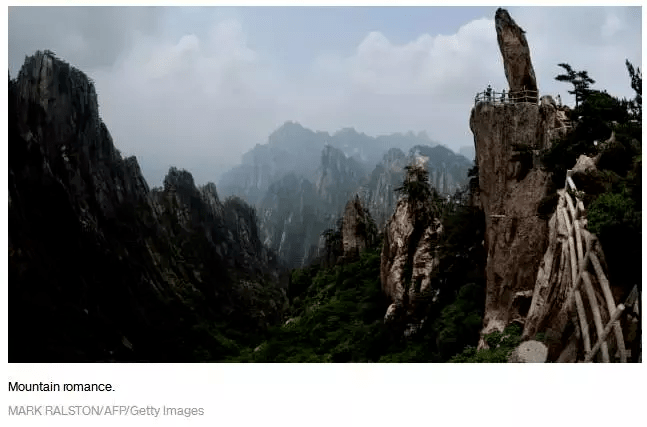
黄山是联合国世界文化遗产之一,被誉为“中国最可爱的山”。对于很多中国人来说,黄山是一生中一定要去一次的地方。1863米高的黄山以奇松怪岩、温泉云海闻名于世。
A UNESCO World Heritage Site set amidst “the loveliest mountains of China,” Mount Huangshan, aka Mount Yellow, is a once-in-a-lifetime trek for many Chinese. The 1,863-meter mountain is renowned for its oddly shaped pines, spectacular rock formations, hot springs and seas of misty and melancholy clouds.
3. Fujian: Mount Wuyi (福建武夷山)
武夷山是中国东南的地标,也是联合国世界遗产之一,武夷山是新儒学发展传播之地,自11世纪开始便对东亚地区产生深远影响。如今的游客们很喜欢在九曲溪中的竹筏漂流活动。总共两小时、八公里的行程可以让人饱览武夷山风光。
A major landmark in southeast China and a UNESCO World Heritage Site, Mount Wuyi was the setting for the development and spread of neo-Confucianism, influential in East Asia since the 11th century. Bamboo raft drifting in the Nine Bend River (lower gorge) is a popular activity among visitors. The two-hour, eight-kilometer trips provide grand views of Mount Wuyi.
4. Fujian: Xiapu Mudflat (福建霞浦)
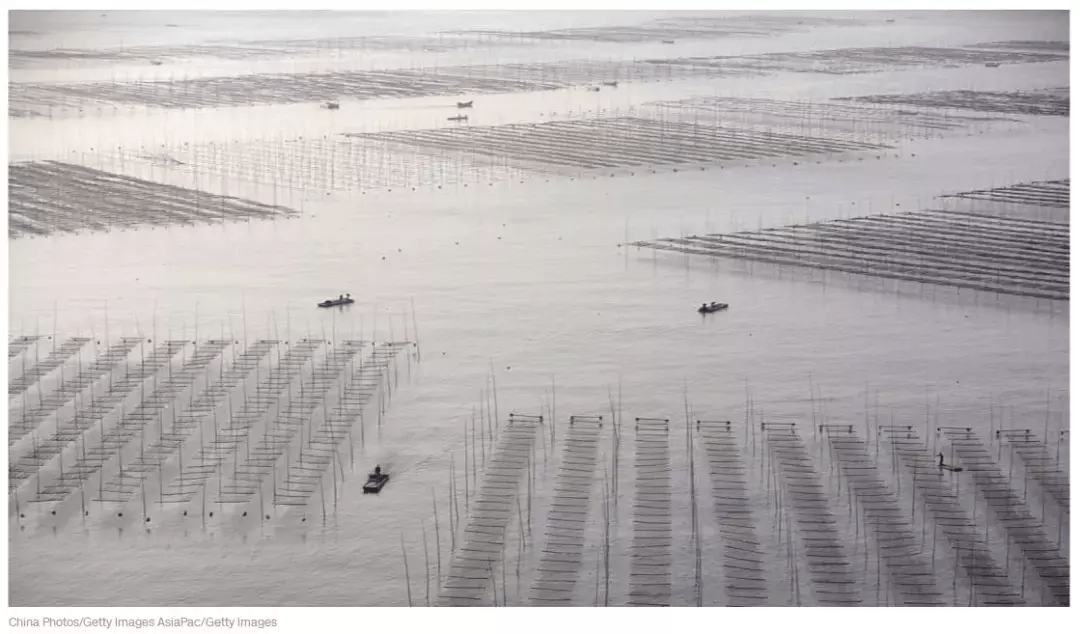
这里的滩涂是中国摄影爱好者的理想目的地。霞浦虽然只在中国东南海岸线一隅,却拥有全国最大的滩涂,占地面积约40平方公里,海岸线超过400公里。在霞浦如虎纹一般的沙滩上,遍布着渔民的竹竿,浮标和渔网,与当地的自然美景相得益彰。
Yes, a humble mudflat is a favorite destination of Chinese photographers. A small region along the southeast China coastline, Xiapu nevertheless has the largest mudflat in the country, encompassing 40 square kilometers and more than 400 kilometers of coastline. Along its tiger-striped beaches, bamboo structures and poles, buoys and fishing vessels provide human counterpoints to the area s natural beauty.
5. Gansu: Echoing Sand Mountain and Crescent Lake, Dunhuang (甘肃省敦煌市鸣沙山和月牙泉)
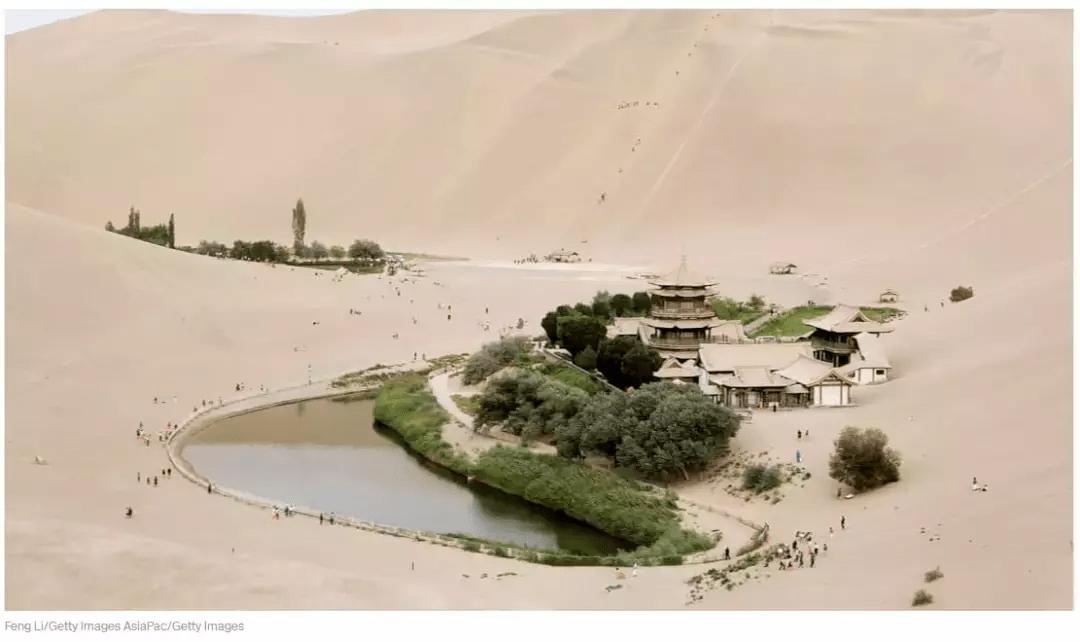
鸣沙山由一系列绕着月牙泉的沙丘组成,得名于其独特的形状和音效特点。当风吹过沙丘时,便可听到回声。月牙泉边花盛开,与大漠风光相映成趣。
Echoing Sand Mountain is a series of dunes surrounding Crescent Lake. Named for its distinctive shape and aural characteristics, its echoes can be heard as the wind blows over the dunes. With gardens blooming on its banks, Crescent Lake offers a lovely visual counterpoint to all that sand.
6. Guangdong: Fortress Towers, Kaiping (广东开平碉楼)
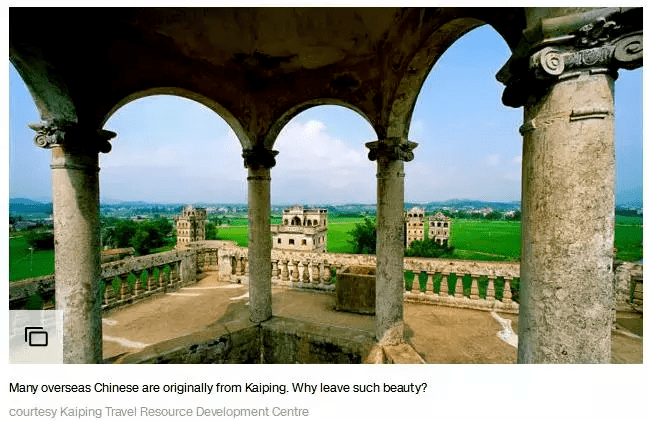
开平碉楼大部分是由著名的“海漂”开平人在20世纪早期建造的,他们把在国外看到的伊斯兰、罗马,甚至古希腊建筑风格带回了家乡。这些碉楼在当时都是财富的象征,也能有效的防止偷窃和战乱。开平目前大约还保留着1800座碉楼。
Erected mostly in the early 20th century, the fortress towers at Kaiping were built by famously outbound Kaipingers, who brought home the many architectural styles they saw abroad, including Islamic, Roman and even ancient Greek. The towers were built as a display of wealth, and as a practical way of protecting locals from war and theft. Approximately 1,800 fortress towers still stand amid Kaiping s vast rice fields.
7. Guangxi: Yangshuo (广西阳朔)
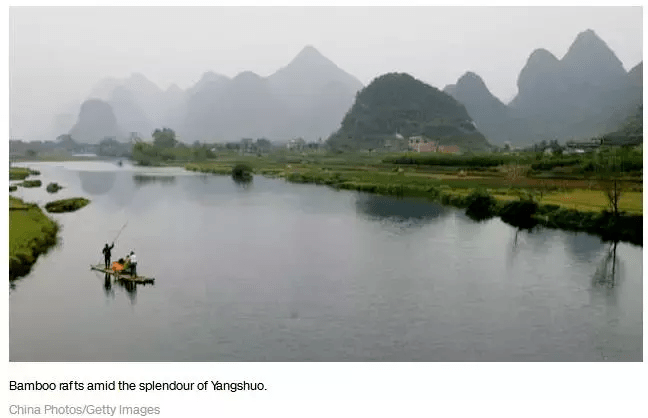
想要饱览中国最美山水之一,在阳朔乘一叶竹筏是个好主意。位于中国南部的阳朔,以喀斯特地貌和传统渔村风格闻名。
When the Chinese long for views of the nation s most scenic hills and rivers, they book a bamboo-boat cruise in Yangshuo. The riverside town in southern China is most famous for its karst hills and traditional fishing-village lifestyle.
城区中心适合游客游玩,游客可以租一辆自行车,向乡下出发,寻一片更静谧的地方,竹筏沿着河流嘎吱作响,渔民带着鸬鹚动身,农民则在田野间辛勤劳作,郁郁葱葱的山峰耸立着。
Downtown is touristy. Visitors can rent bikes and head to the countryside to find a more calming scene: bamboo boats chugging along the river, fishermen setting out with cormorants, farmers toiling in fields with lush peaks soaring high above.
8. Guizhou: Huangguoshu Waterfall (贵州黄果树瀑布)
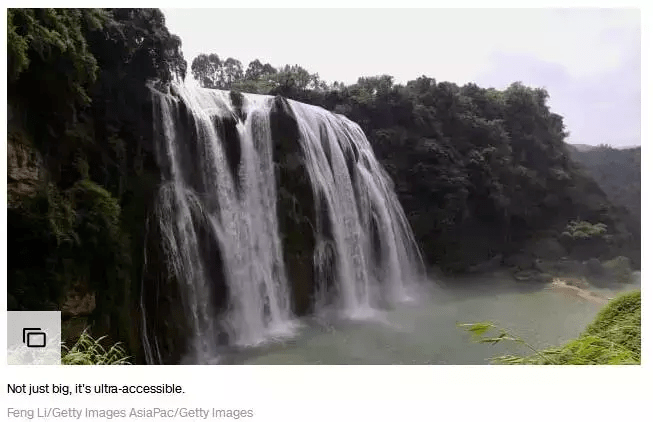
黄果树瀑布是亚洲最大瀑布,落差高达77.8米,宽幅达101米。它是世界上少数可以从多角度欣赏的瀑布之一——上下左右前后观赏俱佳。
The highest waterfall in Asia, majestic Huangguoshu “Yellow Fruit Tree” Waterfall plunges a dramatic 77.8 meters across a 101-meter-wide span. It s one of a handful of mammoth waterfalls in the world that s accessible for viewing from almost any angle – from above, below, front, back, left or right.
9. Hainan: Guanyin Statue (海南南山海上观音像)
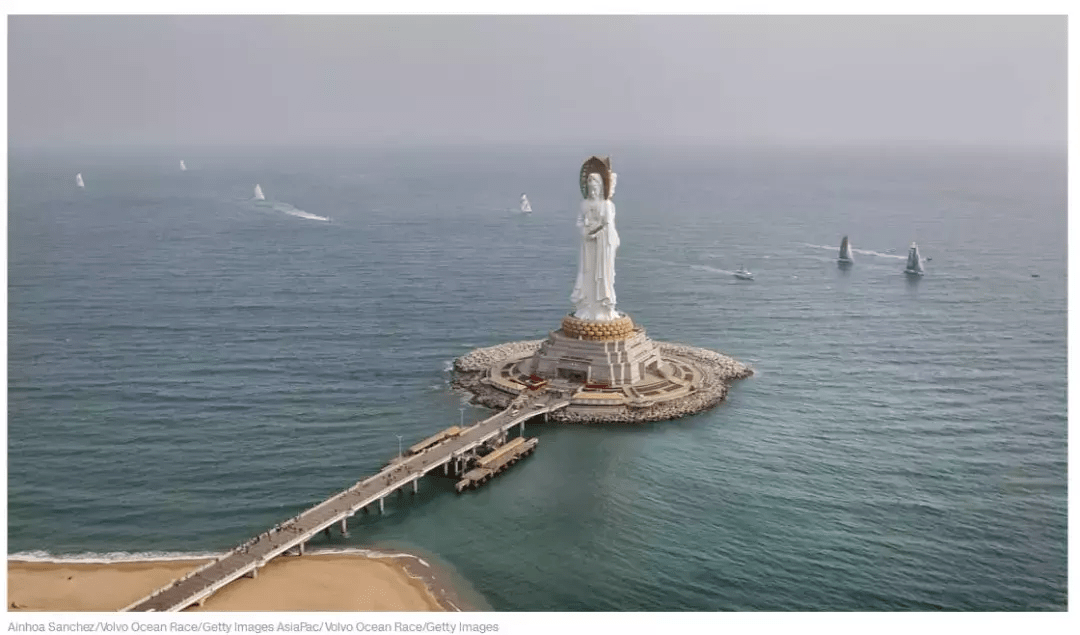
从三亚海滩极目远眺,可以看到世界上最大的海上观音像,伫立在南山附近。
Look beyond the beaches of Sanya to find the world s largest Guanyin statue, erected near Nanshan, China s southernmost mountain.
10. Hainan: Yalong Bay (海南省亚龙湾)
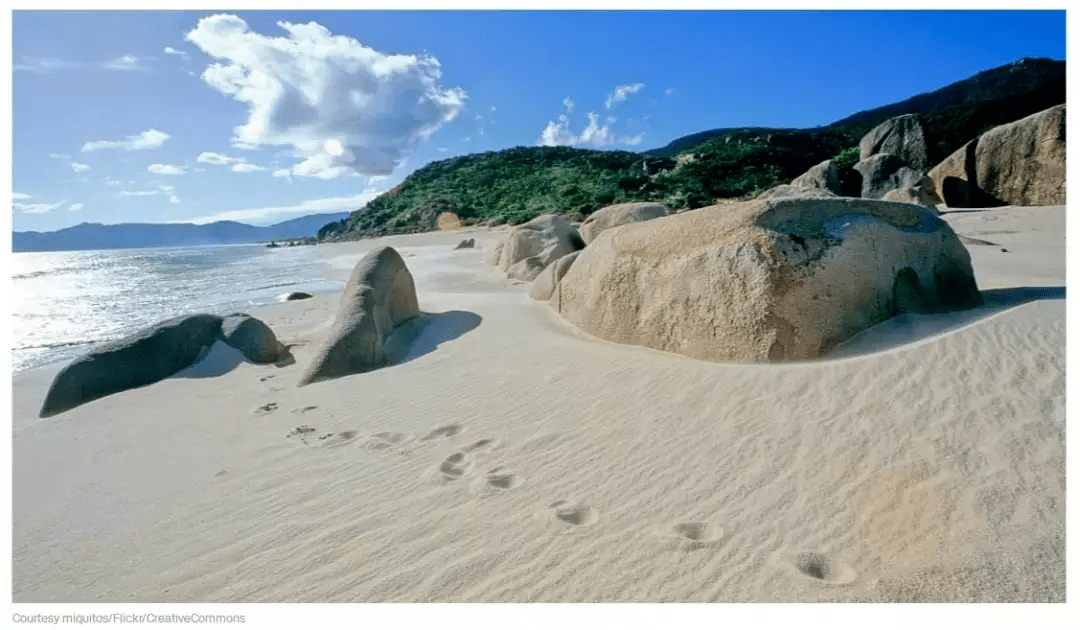
海南提供了国内最好的热带风光。亚龙湾则是度假胜地,这里也是海南开发最好、最受欢迎的海滩。
Hainan delivers the best tropical setting in China. Yalong Bay is the pinnacle of the resort getaway. The 7.5-kilometer crescent beach is the most popular and developed stretch of Hainan s southern coastline.
这里可以体验东南亚风情,有多达20多家国际豪华酒店以及大片棕榈树。对于水上运动爱好者来说,这里恍若天堂。
It provides all the quintessential experiences of a Southeast Asian holiday, with as many luxury hotels as palm trees – more than 20 international luxury hotels line the beach of Yalong Bay. The beach is also a haven for water sports warriors, including surfers who sometimes ride uncrowded waves all day.
11. Hebei: Chengde Mountain Resort/Rehe Palace (河北承德避暑山庄/热河行宫)
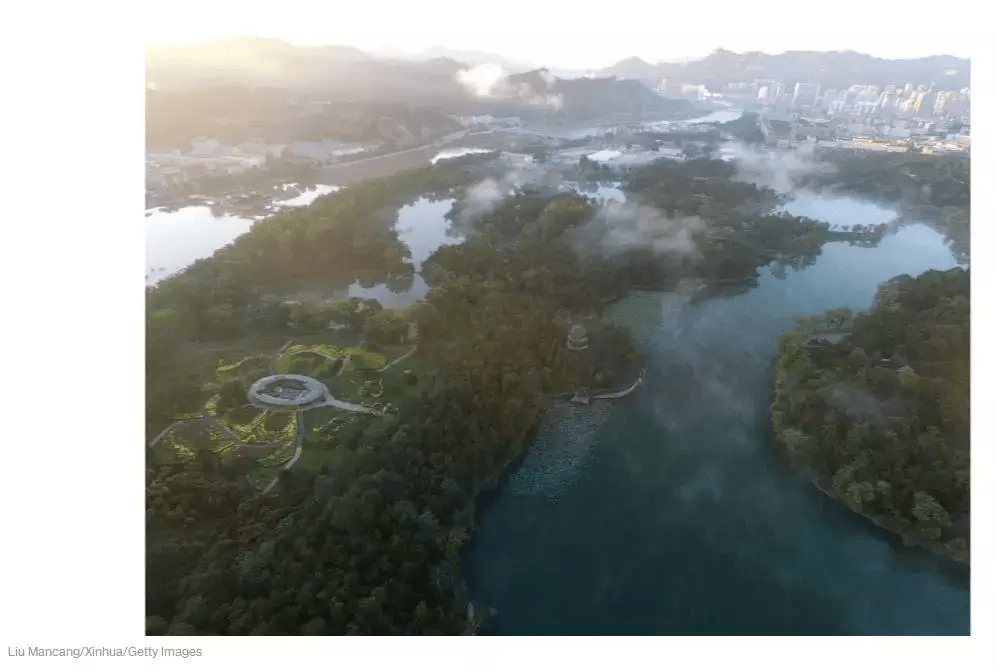
被列入世界文化遗产名录的承德避暑山庄曾是清代皇帝们消暑度假的夏宫。山庄内仍然保留着精致优雅的皇家园林和一座70米高的宝塔。繁茂的草地、巍峨的群山、宁静的峡谷风光让山庄至今仍不失为避暑胜地。
A UNESCO World Heritage Site, this mountain resort was once a summer palace used by Qing Dynasty emperors on holiday. Delicate gardens and a 70-meter pagoda remain. Lush grasslands, marvelous mountains and tranquil valleys still make it a cool place to avoid the heat.
12. Heilongjiang: Saint Sophia Cathedral, Harbin (黑龙江省哈尔滨市圣索非亚大教堂)
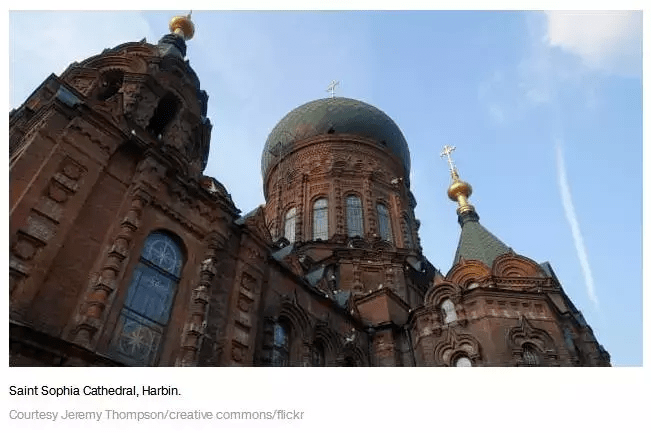
远东地区最大的东正教教堂,坐落在中国最有俄罗斯风味的城市——哈尔滨。
The largest Orthodox church in East and Southeast Asia stands in China s most Russian-accented city, Harbin.
13. Henan: Longtan Valley (河南龙潭大峡谷)
龙潭大峡谷长12公里,这个U型峡谷因紫红色的石英砂岩条纹而著称,人称“中国第一峡谷。”陡峭险峻的悬崖,郁郁葱葱的植物,参差不齐的山谷吸引着来自全国各地的游客。
This 12-kilometer, U-shaped valley marked by a stripe of purplish red quartz sandstone has earned the name, “The No.1 Valley of Narrow Gorges in China.” Its steep cliffs, lush vegetation and jagged valley attract sightseers from all over China.
14. Hubei: One Incense Pillar, Enshi Canyon (湖北恩施大峡谷一柱香)
这个好似一炷香形状的石柱高150米,但只有4米宽,但这样的形状不但立得住,还经历了几次地震都安然无恙,让人觉得不可思议。当地的传说认为,一炷香是神仙赐予勤劳的土家儿女的,当他们遇到灾难时,可以点燃这柱香,神仙将下凡相助。
This incense stick-shaped structure is 150 meters tall, but only 4 meters wide, making it incredible that it stands at all, let alone that it s survived several major earthquakes.Local legend holds that the pillar is a piece of incense given by a deity to the ingenious Tujia people. The residents could light it in times of disaster and the deity would descend to help.
15. Hubei: Shennongjia (湖北神农架)
上个世纪, 400多名目击者声称在神农架茂密的丛林中见过大脚怪物,不过至今也没有确凿的证据证明野人的存在。
More than 400 people claim to have seen a Bigfoot-like creature among the lush vegetation of Shennongjia over the past century, yet no hard evidence has been found to prove the “yeti s” existence.
这个3200平方公里的自然保护区被认为是“世界中纬度地区唯一保存完好的亚热带森林生态”,拥有超过5000种动植物。这里也是珍惜保护动物金丝猴的故乡。
The 3,200-square-kilometer nature reserve also purports to be “the only well-preserved sub-tropical forest ecosystem in the world s mid-latitudes,” with more than 5,000 species of animals and plants. It s home to snub-nosed or golden monkeys, a rare and protected species in China.
16. Hunan: Fenghuang (湖南凤凰)
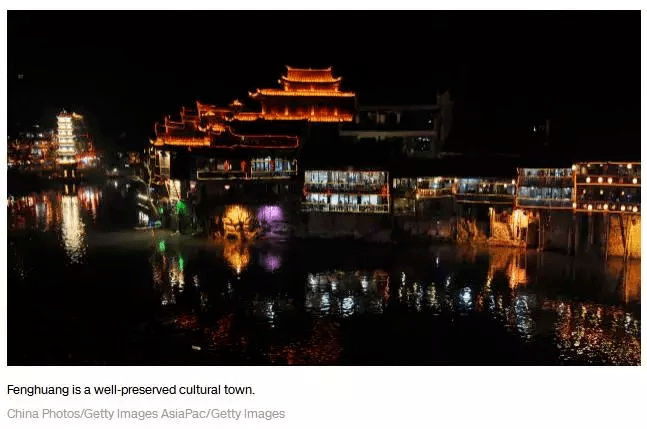
对于文艺青年们来说,凤凰实在是处桃花源。每年都有成群背包客前往凤凰古城,领略苗族和土家族的别样风情。很多人来凤凰古城向中国著名作家沈从文致敬,他的作品《边城》将这个有1300年历史的小县城推向了大众视野。
These stilted houses are the dream lodgings of Chinese art and literature lovers. Every year, armies of young backpackers flock to the ancient town of Fenghuang (which literally means “Phoenix”) for its rich Miao and Tujia ethnic culture. Many also come to pay homage to celebrated Chinese writer Shen Congwen, whose novel “Frontier City” put the 1,300-year-old town in limelight.
17. Hunan: Zhangjiajie (湖南张家界)

武陵源巨型石英砂柱被认为是詹姆斯•卡梅隆在奥斯卡获奖电影“阿凡达”中潘多拉行星上浮动山脉的灵感来源。实际上,武陵源地区位于中国南方湖南省的一个城市张家界,是3000多座石柱的所在地。其中最高的石柱高达400多米。
The giant quartz sand pillars of Wulingyuan are said to have been the inspiration for James Cameron s floating mountains on the planet Pandora in his Oscar-winning movie “Avatar.”In reality, the Wulingyuan area in Zhangjiajie, a city in Hunan Province in southern China, is home to more than 3,000 of these stone columns. The tallest pillar in the stone forest stands more than 400 meters high.
18. Inner Mongolia: Singing Sand Bay (内蒙古响沙湾)
响沙湾是一个110米高的沙丘,距内蒙古包头市50公里。响沙湾的沙丘倾斜45度角,那里的风声像是在浅吟低唱。
Singing Sand Bay, aka Yinken Sand Bay, is a 110-meter-high dune, 50 kilometers from Baotou, a major city of Inner Mongolia. Sliding off a 45-degree angle, the wind here is said to sing in soft whispers.
19. Jiangsu: Brahma Palace (江苏梵宫)
风水和佛教对中国都影响极深,这一点在江苏梵宫都能找到踪迹。梵宫处于灵山脚下,临近太湖和88米高的灵山大佛。梵宫是中国风水的缩影,它山环水绕,预示着好运和健康。
Feng shui and Buddhism have deep influences on China. Both can be found at Brahma Palace. Beneath the foot of Little Lingshan Mountain, and near Taihu Lake and the 88-meter-tall Lingshan Giant Budda, the palace epitomizes Chinese feng shui – it s surrounded by mountains and water, portending both good fortune and health.
20. Jiangxi: Mount Lu (江西庐山)
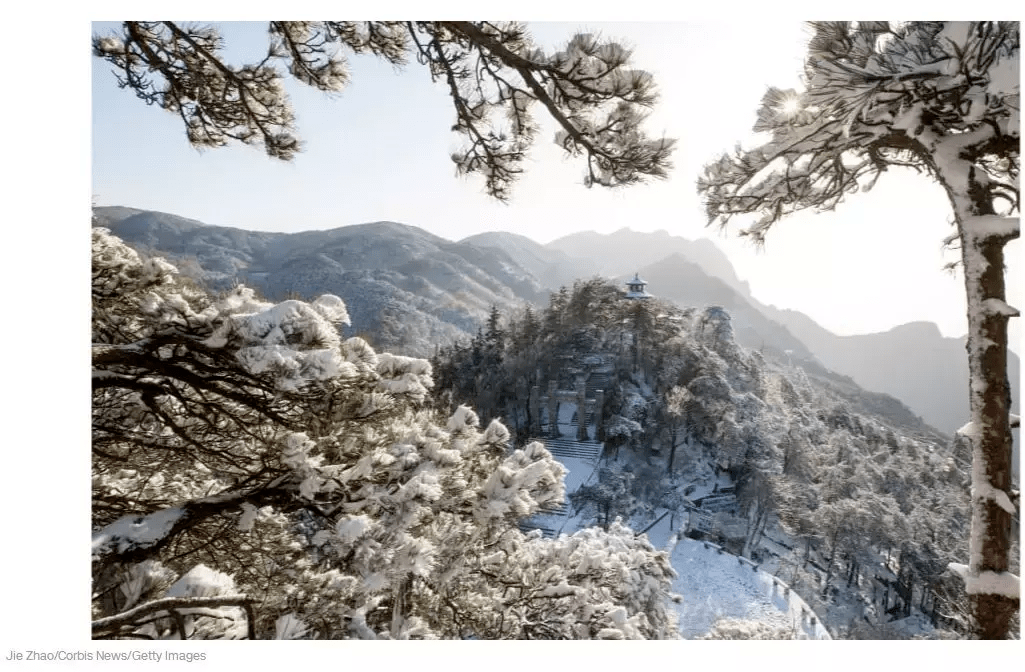
1996年列入联合国世界遗产名录,庐山远非一处景点那么简单。这是中国文化与灵感的象征之一。从古至今,不同时期的1500多位知名画家和诗人都曾以庐山作为灵感的来源。李白和徐志摩就是他们当中的两位。他们创作的诗歌被刻在庐山的峭壁上。
A UNESCO World Heritage Site since 1996, Lushan National Park, with its centerpiece of Mount Lu, is more than a tourist attraction. It s a cultural and spiritual symbol of China. Upward of 1,500 famed painters and poets from various periods of ancient and modern China – Li Bai of the Tang Dynasty and Xu Zhimo in 1920s, to name two – have traveled here to be inspired by Lu. Masterpiece poems are engraved in calligraphy on the mountain cliffs.
21. Jiangxi: Wuyuan (江西婺源)
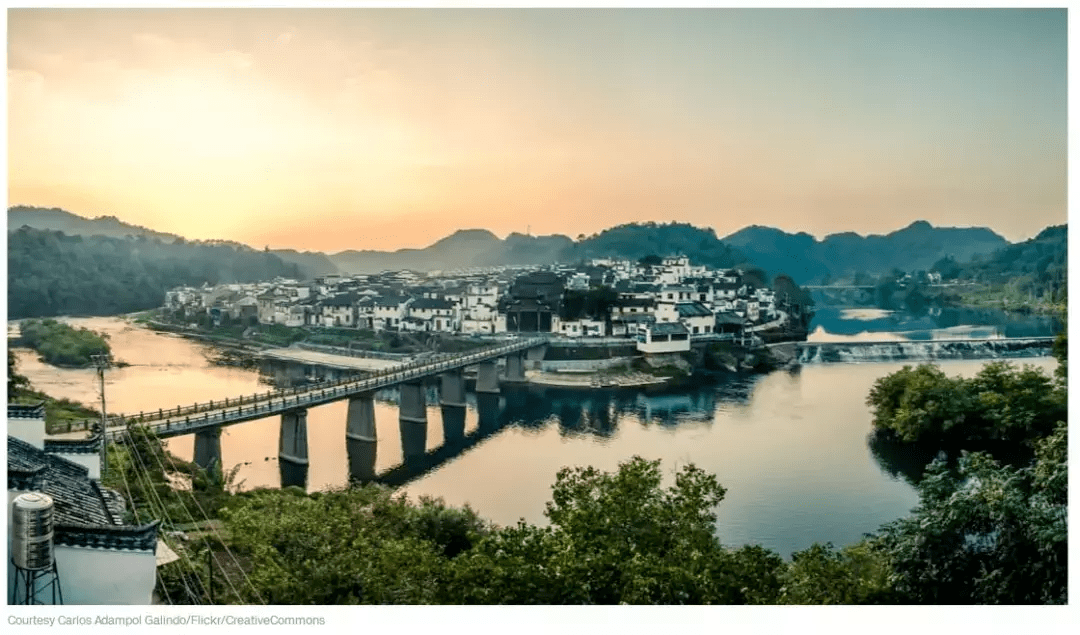
这里是“中国最美乡村”之一。这就是婺源(一个位于中国东部三省交界处的小县城)广为人知的原因。每年春天,五彩缤纷的花朵和悠闲的乡村气息吸引着成千上万的游客。
“One of the most beautiful rural areas in China.”That s how Wuyuan (a small county located at the junction of Anhui, Jiangxi and Zhejiang provinces in eastern China) is best known. Colorful blossoms and a relaxed, countrified pace attract hundreds of thousands of visitors each spring.
22. Jilin: Heaven Lake, Changbai Mountain (吉林长白山天池)
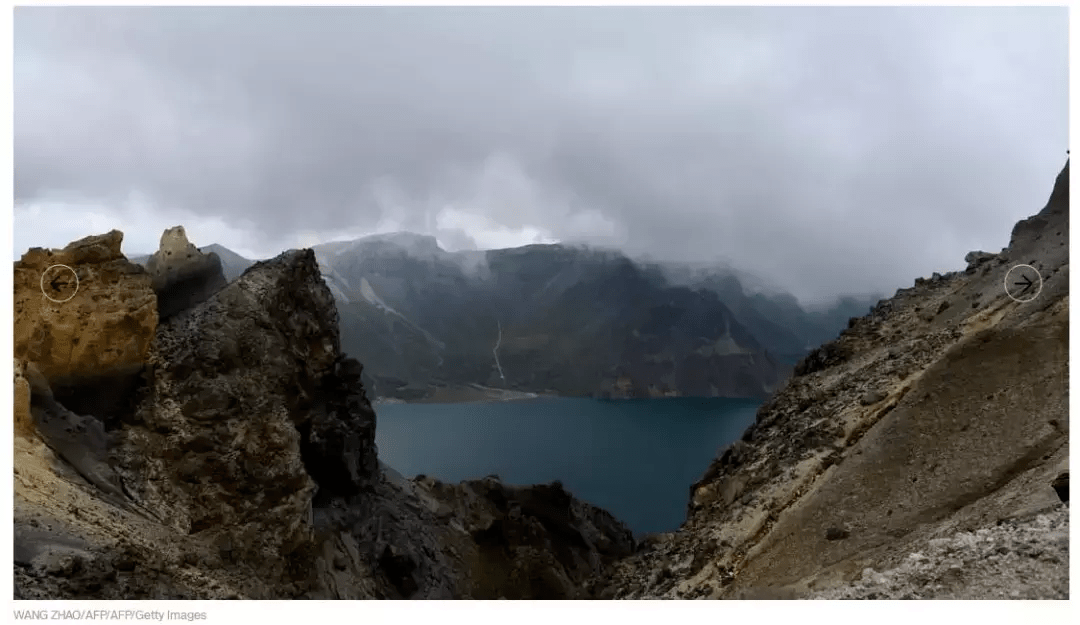
长白山天池的水就像伏特加一样清澈,它像一块玉石,被长白山自然保护区的16座大山环抱。天池平均水深204米,是中国最深的湖。
The vodka-clear Heaven Lake is said to resemble a piece of jade surrounded by 16 peaks of the Changbai Mountain National Reserve. With an average depth of 204 meters, it s the deepest lake in China.
这里也是“怪兽迷”们向往的地区:过去20年,很多游客都声称目击过长达20米的湖中生物。
This is also a hot spot for water monster fans – in the last two decades China travelers have reported accounts of a lake creature as long as 20 meters.
23. Liaoning: Benxi Water Cave (辽宁本溪水洞)
五彩斑斓的本溪水洞形成于500万年前。如今,它的主体部分分为“旱洞”和“水洞”。水洞中林立着石笋和钟乳石,笼罩在瑰丽的绿、黄、红色中,千姿百态、光怪陆离。水洞中还有世界最长的地下河,长达5.8公里
Exploding with color, the Benxi Water Cave was formed more than five million years ago. Today its main sections are a “drought cave” and a “water cave.” A dramatic array of stalagmites and stalactites are covered in vibrant greens, yellows and reds. The water cave contains the world s longest underground river at 5.8 kilometers.
24. Liaoning: Golden Pebble Beach National Resort, Dalian (辽宁金石滩)
距离大连市中心仅30公里的金石滩,古老的岩层被时间和自然力量变成了奇形怪状的动物复制品——骆驼,老虎,甚至恐龙。最大的岩石高达40米,被比喻为“恐龙探海”。
Along 30 kilometers of Golden Pebble Beach (it s also known as the Jinshitan Scenic Area) just outside downtown Dalian, ancient rock formations have been twisted by time and elements into bizarre replicas of animals – camels, monkeys, tigers, even dinosaurs.The largest is a 40-meter-high rock named after a “dinosaur who explores the sea.”
25. Ningxia: Sand Lake (宁夏沙湖)
每年4月至5月,9月至10月,100多万只各种鸟类会迁徙到这片湿地上。其他时候,大约200多种鸟类栖息于此,其中还有很多保护动物。
More than 1 million migrating birds of various species stop over at this wetland in Ningxia twice a year (April-May, September-October). The rest of the year, around 200 species of birds call the wetlands home, including a large number of protected species.
在这片80平方公里广阔区域内,河流,沙漠,芦苇相互交织,形成了一个特殊的地理现象叫做“沙湖”。
Desert, water and reed mashes blend in this 80-square-kilometer area, which forms a unique geographic phenomenon called sand lake (“sha hu” in Mandarin).
26. Qinghai: Qinghai Lake (青海省青海湖)

这是中国最大的内陆咸水湖,每年六七月景色最佳,是位于中国大西北的青海省最迷人的景点之一。青海湖位于海平面3205米以上,距离最近的交通枢纽西宁有3小时的车程。除了每年夏季一群风风火火的自行车手会聚集到这里参加环青海湖国际公路自行车赛以外,鲜有游人跑到这里来欣赏这油画般的美景。
China s largest inland saltwater lake. This view is one of the great draws of Qinghai Province in China s far northwest every June and July. The lake sits 3,205 meters above sea level and is a three-hour bus ride from the nearest traffic hub of Xining. Few tourists make it to this part of China to enjoy this oil painting of a scene, not counting packs of mad cyclists who come for Tour de Qinghai Lake International Cycling Race every summer.
27. Shaanxi: Xi an City Wall (陕西西安城墙)
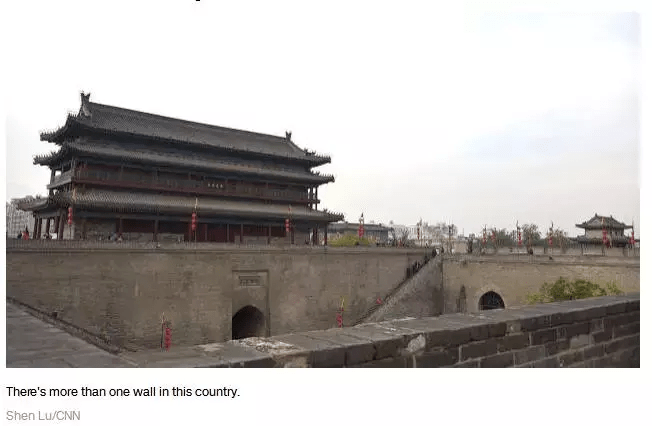
除了举世闻名的万里长城,始建于2000多年前西安城墙也代表着这个文明古国全盛时期劳动人民的智慧和力量。现存的部分城墙建于1370年(明朝),城墙长13.7公里,高12米,宽15-18米不等,城墙恰好环抱西安市区。骑上自行车,沿城墙跑上三四个小时,即可一睹这座伟大古城的风采。
In addition to the world-renowned Great Wall, the city wall belonging to Xi an, first constructed more than 2,000 years ago, also represents the power and wisdom of the Middle Kingdom in its ancient heyday. What exists of the wall today are remains from 1370, when during the Ming Dynasty the fortification was 13.7 kilometers long, 12 meters high and between 15 to 18 meters wide. It now surrounds downtown Xi an. Spend three or four hours biking along the wall and you ll get great views of China s old capital city.
28. Shandong: Trestle Bridge, Qingdao (山东青岛栈桥)
横卧于黄海之上的青岛栈桥和青岛市一样古老,栈桥自1892年建立以来一直是青岛市的标志,据说当时清朝重臣李鸿章命人修建。漫步于440米长的栈桥上,可以尽情享受迎面而来的海风。栈桥尽头的回澜阁则是历史与文化的交融。
As old as the city of Qingdao, the Trestle Bridge has sat astride the Yellow Sea since 1892. First built for the reception of Li Hongzhang (李鸿章), a prominent statesman during the Qing Dynasty, Trestle Bridge has since become a symbol of the city. Walking the 440-meter-long bridge is a great way to enjoy breezes coming off the sea. At one end is Huilange Pagoda, a classic beauty that hosts historic and cultural exhibits throughout the year.
29. Shanxi: Hukou Waterfall (山西壶口瀑布)
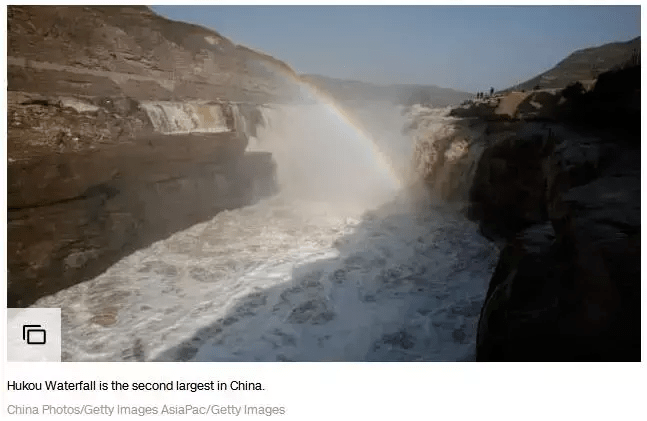
在有些人看来,壶口瀑布是中国最壮观的瀑布。壶口瀑布是黄河最大的瀑布,也是中国第二大瀑布,同样还是50元人民币的背后图案。
According to some, the most magnificent waterfall in the country. As the largest waterfall on the Yellow River, and second largest in China, Hukou Waterfall is known around the country for once gracing the RMB 50 note.
壶口瀑布位于山西省和陕西省交界,高20米,宽达30米。5月至10月是观赏的最佳时间,水大而稳,有时能看到洪流在50米的落差中翻腾倾涌的壮观景象。
At 20 meters high and 30 meters wide, the fall is located on the border of Shanxi and Shaanxi provinces. The May to October flood season is the best time to visit, when water flow and velocity increase, sometime swelling the fall into a 50-meter-wide spectacular scene.
30. Shanxi: Yungang Grottoes (山西云冈石窟)
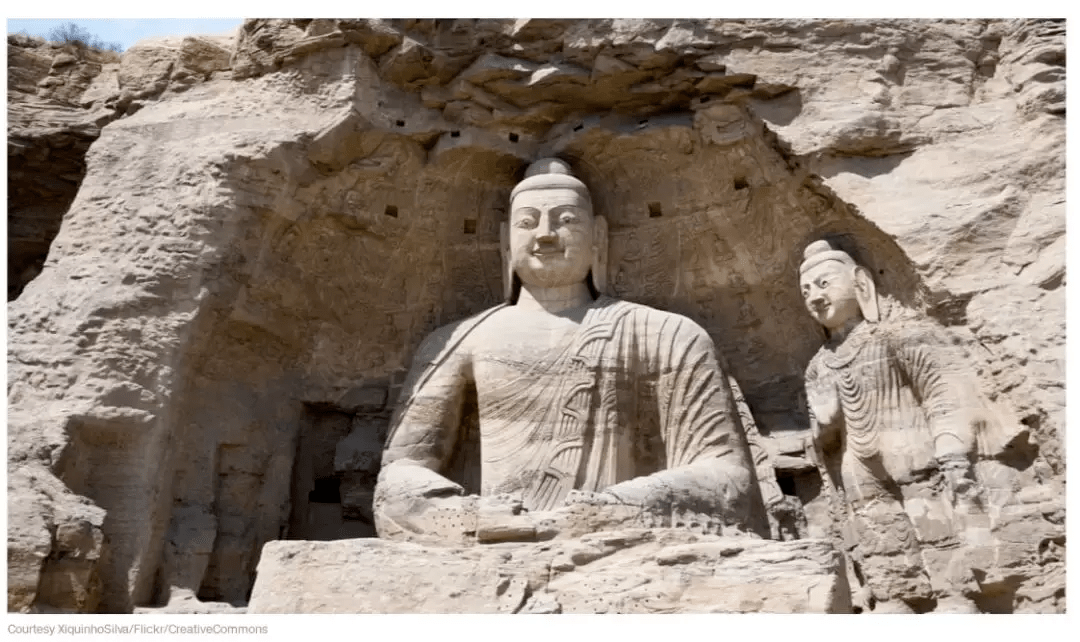
云冈石窟历经1500余年,是重要的佛教地标。它拥有252个石窟和51000多尊佛像,大多数都是公元5-6世纪期间北魏时期的作品。这些砂岩雕像,最高17米,最小两厘米,结合了多种风格的佛教艺术,包括中国、犍陀罗和波斯等国,石窟16到20是保存最完好的5个洞穴。他们为五名北魏皇帝的佛像提供了庇护。
This 1,500-year-old site is an important Buddhist landmark. It houses 252 caves and more than 51,000 Buddha statues, most carved between the fifth and sixth century during the North Wei Dynasty. The sandstone statues – the tallest stands 17 meters, the tiniest two centimeters – combine multiple styles of Buddhist art, including Chinese, Gandhara and Persian. Grottoes 16 through 20 are the five best preserved caves. They shelter five Buddhas modeled after five Wei emperors.
31. Sichuan: Hailuogou Glacier National Park (四川海螺沟)
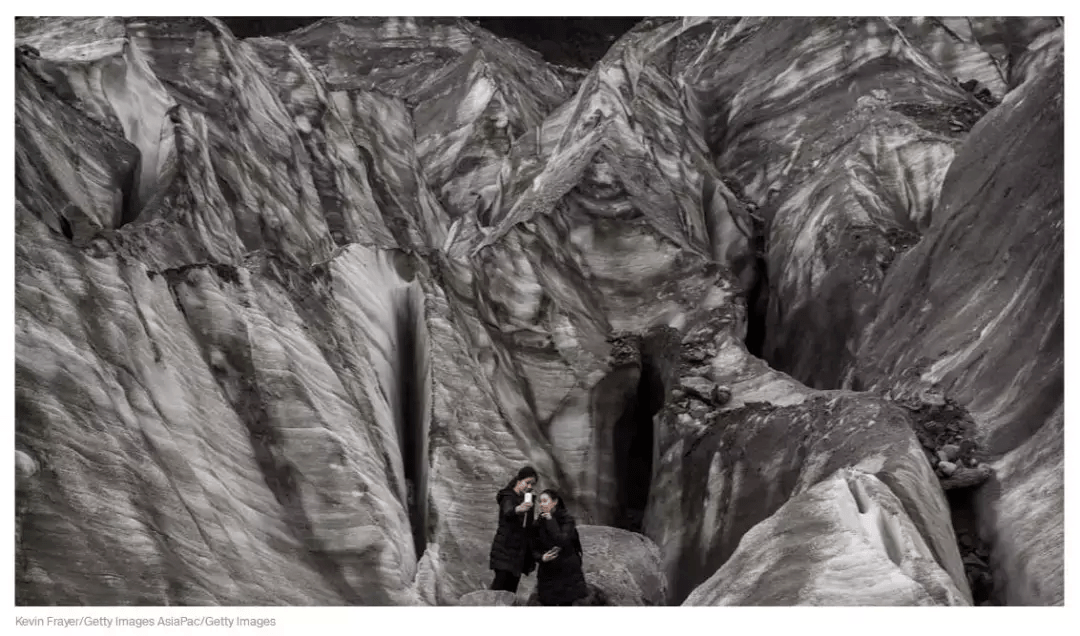
海螺沟位于四川省贡嘎山东坡。传说中,只有那些幸运儿才能享受这里的美景。
Legend holds that only the lucky will be treated to this view. Also known as “Conch Gully,” Hailuogou park sits at the eastern foot of Gonggar Mountain in southwest China s Sichuan province.
相传,海螺沟是为纪念一位得道藏僧,他一吹海螺便引来林中禽鸟动物围着石穴听他念经。为了纪念这位僧人,他住过的岩穴就被称作“海螺沟”。
According to legend, the gully was a wasteland until a renowned Tibetan monk played his treasured conch there and attracted many animals, who became so enchanted with the place that they took up residence. To memorialize the monk and his conch, the gully ever after became known as Conch Gully.
一年四季,我们都可以看到这个壮丽的冰川,覆盖森林、悬崖、山峰和峡谷。它在清晨的阳光下最为美丽。冰川下面分布着10多个温泉,3个向公众开放,其中 一个海拔2600米。
The magnificent glacier, which drives through woodlands, cliffs, peaks and gullies, is accessible all year round. It appears at its best in early morning sunshine. More than 10 hot springs are spread beneath the glacier. Two are open to the public, including one at an elevation of 2,600 meters.
32. Sichuan: Jiuzhaigou (四川九寨沟)
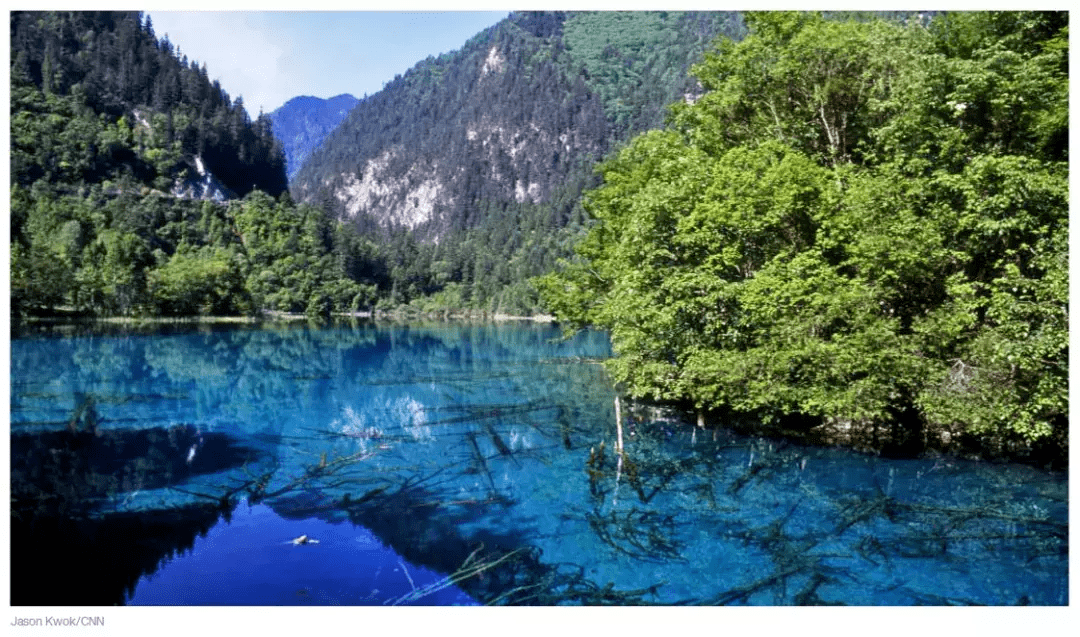
九寨沟遍布高山湖泊和大小瀑布,而这片广阔的湖水是九寨沟的珍宝明珠。
This massive lake is the crown jewel of Jiuzhaigou, a region full of stunning alpine lakes and waterfalls.
这里的湖水一年四季变幻着斑斓色彩,那色彩来自周围山林的倒影,也来自浅浅湖底的水藻和钙化的岩石。这里的景色秋天最美,湖面宛如打翻了的颜料盘,五光十色。
The lake is filled with incredible water that changes color throughout the day and year. The color comes from the reflection of the surrounding landscape, as well as algae and calcified rocks at the bottom of the shallow lake. Autumn is the best time to visit, when the lake surface appears as a multihued painter s palette.
33. Tibet: Potala Palace (西藏布达拉宫)
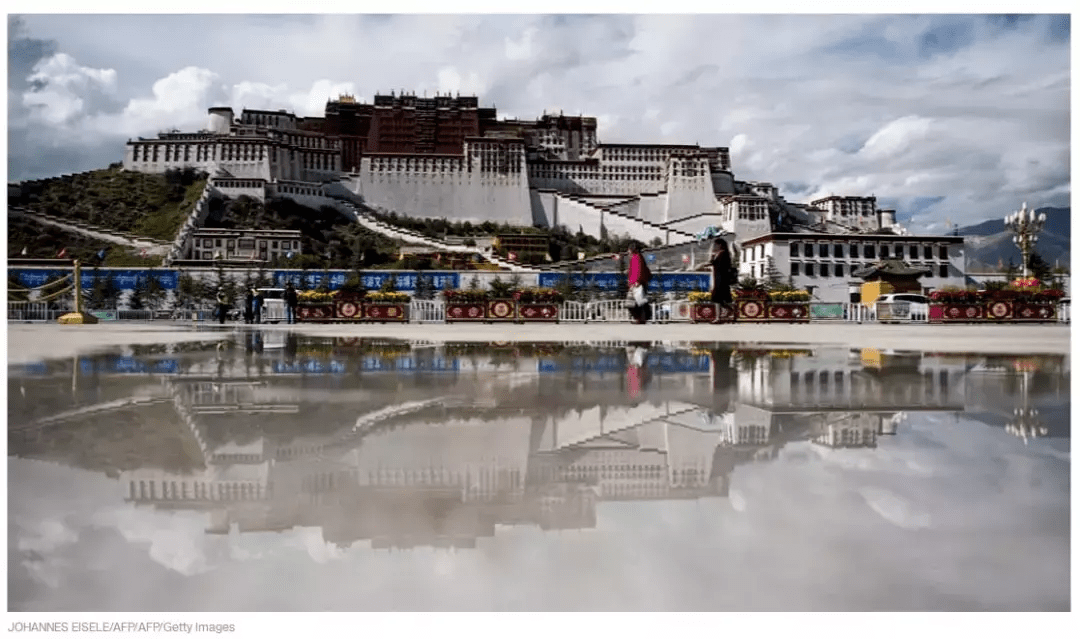
这座九层建筑位于海拔3700米以上,是世界上最高的宫殿。
This nine-story attraction stands 3,700 meters above sea level, making it the highest palace on the planet.
34. Xinjiang: Lake Karakul (新疆喀拉库勒湖)
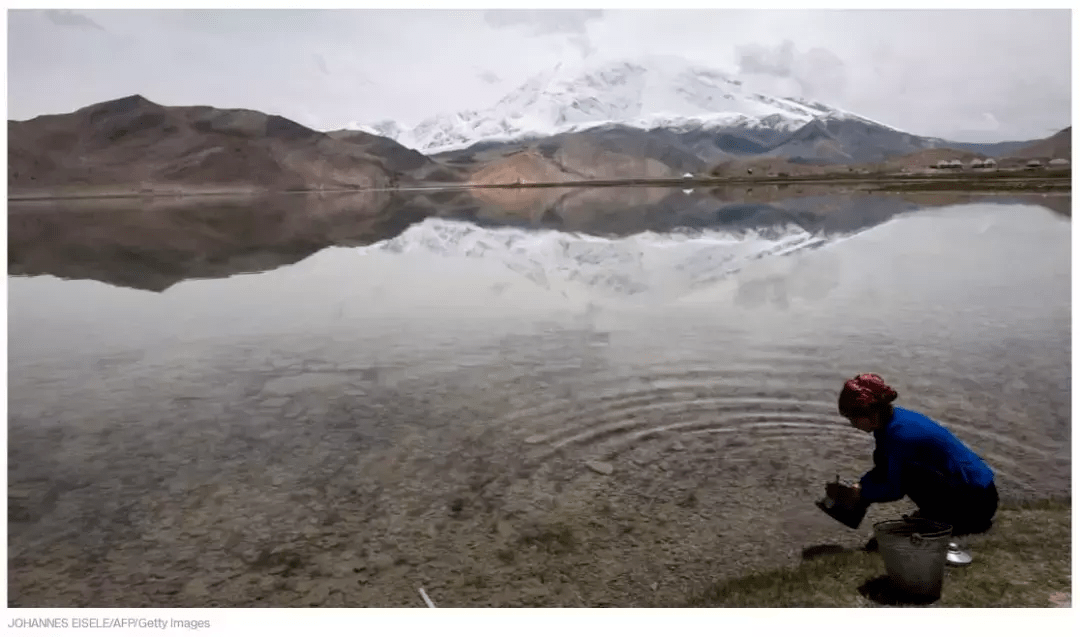
走过被称为世界上最危险的喀喇昆仑公路,才能目睹这番景色。尽管沿途有许多“山体滑坡”标识,也没能阻挡游客们的脚步。屹立于海拔3600上的帕米尔高原,冰川湖像一面巨大的镜子,倒映着群山。最佳观景时间为5-10月份。
This stunning view is the reward after a thrilling ride over one of the world s most dangerous roads, Karakoram Highway. The many “landslide site” signposts along the way haven t stopped devoted travelers. Standing 3,600 meters above sea level on the Pamir Plateau, the glacier lake s water reflects the surrounding mountains like a huge mirror. Best time to go is May to October.
35. Xinjiang: Nalati Grassland (新疆那拉提草原)
这种群山草甸在中国西北很独特,相传成吉思汗的军队当时也被它的景色所折服,所以称呼此地为“那拉提”(“那拉提”在蒙古语中是“太阳升起的地方”的意思)。草原是体验哈萨克风情的好地方。当地人仍然流行传统体育活动,住蒙古包,为家庭聚餐放鹰打猎。
This sub-alpine meadow is so distinct in northwest China that, according to legend, one of Genghis Khan s troops was so awed by its color that he gave the area the name “Nalati” (meaning “place where the sun emerges” in Mongolian). The prairie is a great place to experience Kazak customs. Locals still play traditional sports, live in yurts and raise falcons to hunt for the family dinners.
36. Yunnan: Three Pagodas, Dali (云南省大理崇圣寺三塔)

这些佛塔是云南古镇大理的重要地标。主塔初建于9世纪中叶,高69米,共16级,是为祈祷缓解水患而修建,是唐代的“摩天大厦”,仍为中国现存的最高佛塔。每层都装饰有佛像。
These Buddhist towers are the chief landmark of Dali, an ancient town in China s southwest Yunnan Province. The main tower was first built in mid-ninth century in the hope to easing regular flooding. At 69 meters and 16 stories high, it was a “skyscraper” for the Tang Dynasty and is still the tallest pagoda in China. Each of it tiers is decorated with Buddha statues.
其他两座南、北小塔形高42米,建于10世纪。三塔呈等边三角形排列,各个角度都能满足摄影爱好者的需求。
The other two identical towers stand 42 meters and were erected almost a century later. The three holy structures form an equilateral triangle. Shutterbugs can get great shots from many different angles.
37. Yunnan: Pudacuo National Park, Shangri-la (云南香格里拉普达措国家公园)
普拉措是中国第一个符合世界自然保护联盟标准的国家公园。中国超过20%的植物物种,约三分之一的哺乳动物和鸟类自然分布于这片湿地。摄影师尤其偏爱这片湿地多类型的兰花和濒临绝种的黑颈鹤。公园中碧塔海的双唇鱼,非常古老,250万年前就存在了。
Pudacuo is the first national park in China to meet the criteria set by The World Conservation Union, a major global environmental organization. More than 20% of the country s plant species and around one-third of its mammal and bird species call this wetland plateau home. Photographers especially love the area s many types of orchids and China s highly endangered black-necked cranes. In Bita Lake in the park, the Bita double-lip fish is an ancient fish dating back 2.5 million years.
38. Zhejiang: Nanxi River (浙江楠溪江)
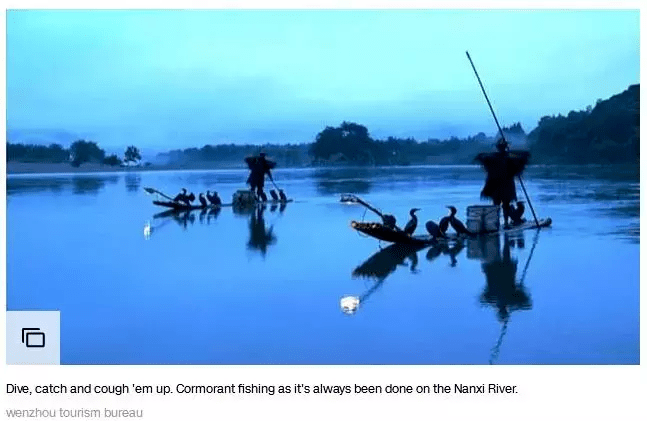
楠溪江周边群山、海岸古民居林立,毫无争议地成为中国古典画和水墨画的摇篮。游客乘竹筏沿楠溪江漂流而下,可以欣赏到当地人沿河洗衣服,用鸬鹚捕鱼的渔民。
With its mountain backdrop and shores lined with ancient houses, the Nanxi River inevitably became the cradle of classic Chinese water-and-ink painting. By drifting down the Nanxi River on a bamboo craft, travelers can enjoy views of locals doing laundry along the river and fishermen employing traditional methods of using cormorants to catch fish.
39. Zhejiang: Thousand Island Lake (浙江千岛湖)

户外活动是这里的一大亮点——高速艇,划水,动物主题跳岛游,爬山。此外,游客还能享受到超赞的海鲜。从经济型小屋到五星级酒店,住宿的选择也很多样。
Outdoors activities are the draw of this ginormous recreation and resort area – speedboating, water skiing, animal-themed island-hopping, mountain climbing. Travelers can also find excellent seafood and everything from budget cabins to five-star hotels.
40. Zhejiang: Yunhe Rice Terrace (浙江云和梯田)
“云和”字面意思为“平和的云彩”,云和梯田距今已有1000多年历史。沿山而建,海拔跨度为200米到1400米,最多有700多层。阴雨天是最棒的游览时间,河水中飘起的层层雾气飘过梯田,创造了田园般的梦境。
Literally meaning “peaceful clouds,” Yunhe and its surrounding rice terraces have been home to farmers for at least 1,000 years. Winding in a maze up mountainsides from 200 to 1,400 meters, individual terraces can be constructed of as many as 700 layers. Rainy days are the best time to visit, when steam from evaporating river water floats through the terraces, creating a kind of agricultural dreamscape.


